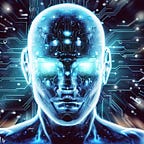Revolutionizing AI Training: Physics-Based Self-Learning Machines
In an era where AI has become as pervasive as the air we breathe, reminiscent of the ubiquitous technology in “Black Mirror,” researchers are tirelessly seeking innovative ways to enhance efficiency while reducing the environmental toll. AI, much like the replicants in “Blade Runner,” offers astonishing capabilities, but it comes at a cost — a substantial demand for energy. In this blog, we embark on a journey through groundbreaking research at the Max Planck Institute for the Science of Light in Erlangen, Germany, where scientists are introducing a concept that could transform AI training, fusing modern science, traditional wisdom, and a touch of sci-fi imagination.
The Energy Challenge
Before we dive into the exciting developments, let’s acknowledge the stark reality of AI: energy consumption. Training AI models, such as GPT-3, which fuels the eloquent ChatGPT, requires an astonishing 1,000 megawatt hours of energy, akin to the annual consumption of 200 German households with three or more residents. It’s reminiscent of the energy crisis portrayed in “Mad Max,” where resources are stretched to their limits.
Neuromorphic Computing: A Paradigm Shift
To combat this energy conundrum, researchers have ventured into the realm of neuromorphic computing. Think of it as a fusion between the traditional wisdom of the human brain and the futuristic ambitions of AI. Unlike the matrix-like artificial neural networks of today, neuromorphic computing aspires to replicate the brain’s parallel processing and integrated memory and processing functions, something akin to “The Matrix” or “Ghost in the Shell.”
The Energy Efficiency Challenge
At the heart of this transformation lies the challenge of energy efficiency. In traditional digital computers, the energy expended in data transfer between processors and memory components during neural network training is staggering. Imagine the inefficiency of a steam locomotive in the age of high-speed electric trains. The human brain’s innate efficiency, with its parallel processing and integrated functions, serves as a model that digital computers are trying to emulate.
Enter the Self-Learning Physical Machine
Picture this: a self-learning physical machine developed by Víctor López-Pastor and Florian Marquardt, reminiscent of a concept straight out of “The Jetsons.” It challenges the traditional AI training paradigm. Unlike conventional artificial neural networks that thirst for external feedback to adjust synaptic connections, this autonomous marvel optimizes its parameters independently through physical processes. It’s akin to R2-D2 fixing itself or an automaton with a mind of its own.
The Versatile Physical Process
What sets this innovation apart is its versatility, reminiscent of the shape-shifting T-1000 in “Terminator 2.” It can harness various physical processes, and the exact nature of the process doesn’t need to be predetermined. However, there are criteria. The process must be reversible, capable of running forwards and backward with minimal energy loss, similar to time loops in “Doctor Strange.” Additionally, it must be nonlinear, allowing for complex transformations, much like the bending of reality in “Inception.”
Optics and Beyond
Imagine a collaboration straight out of “Star Trek,” where López-Pastor and Marquardt team up with an experimental crew to develop an optical neuromorphic computer. This futuristic machine processes information using superimposed light waves, reminiscent of the holodeck’s holographic simulations. The researchers aim to integrate the concept of the self-learning physical machine into this optical system, paving the way for AI with an unprecedented number of synapses and vast datasets, much like the futuristic technology seen in “Star Trek.”
The Future of AI
As AI continues its relentless march forward, we are reminded of the replicant Roy Batty’s quest for more life in “Blade Runner.” The demand for efficient training methods becomes paramount. Self-learning physical machines offer a promising solution, akin to the tech dreams of “The Expanse,” addressing the energy challenge in AI training. As we eagerly anticipate the unveiling of the first self-learning physical machine within three years, we stand on the brink of an AI future that blends modern science, traditional wisdom, and a touch of sci-fi fantasy, with endless possibilities for innovation and advancement.
